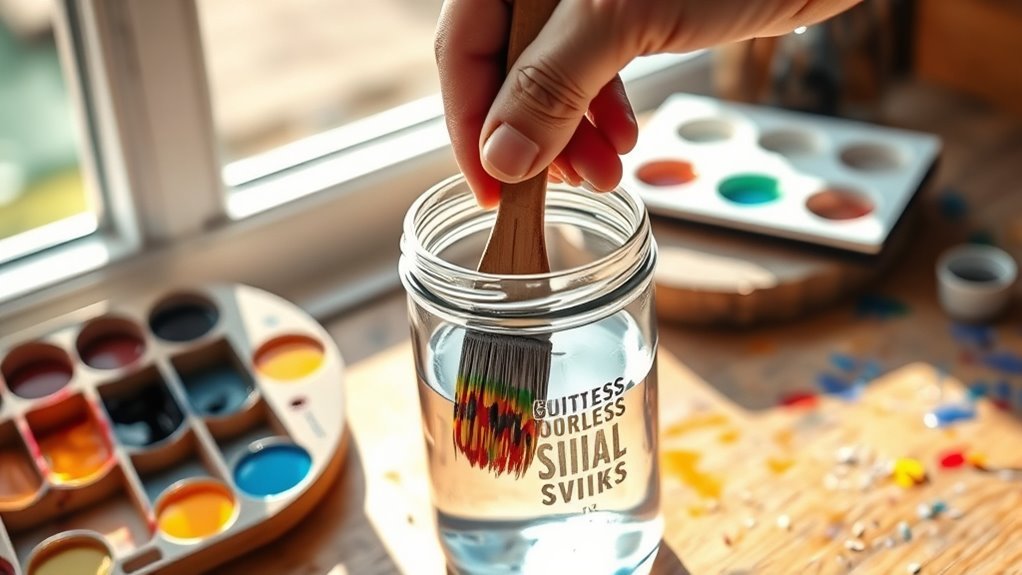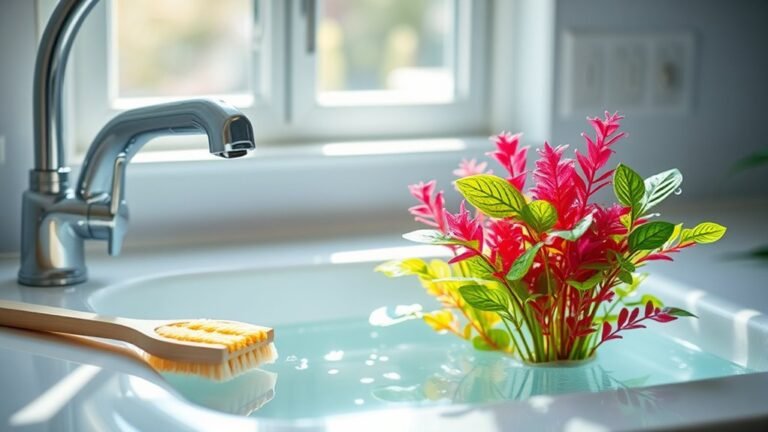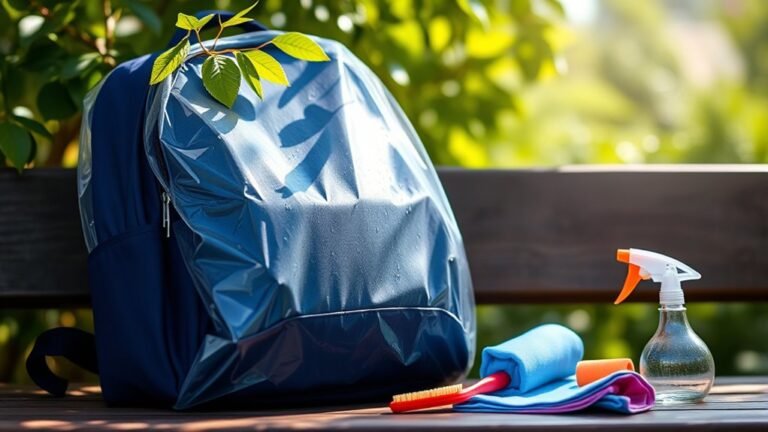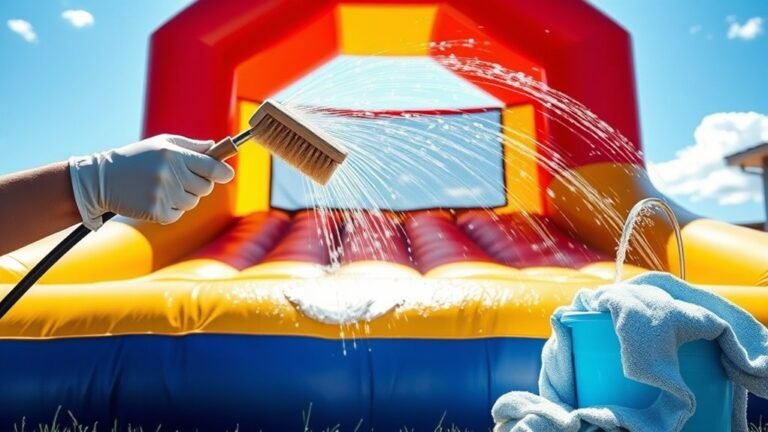How Do I Clean Oil Paint off Brushes
To clean oil paint off brushes, start by gathering materials like mineral spirits and clean rags. First, wipe excess paint from the bristles. Then, dip the brush in a solvent and swirl it to dissolve the paint. Follow up with soapy water to cleanse, rinse under running water, and reshape the bristles. Repeat these steps until the brush is clean. Keep going to discover more about brush maintenance and safety tips during the cleaning process.
Preparation For Cleaning
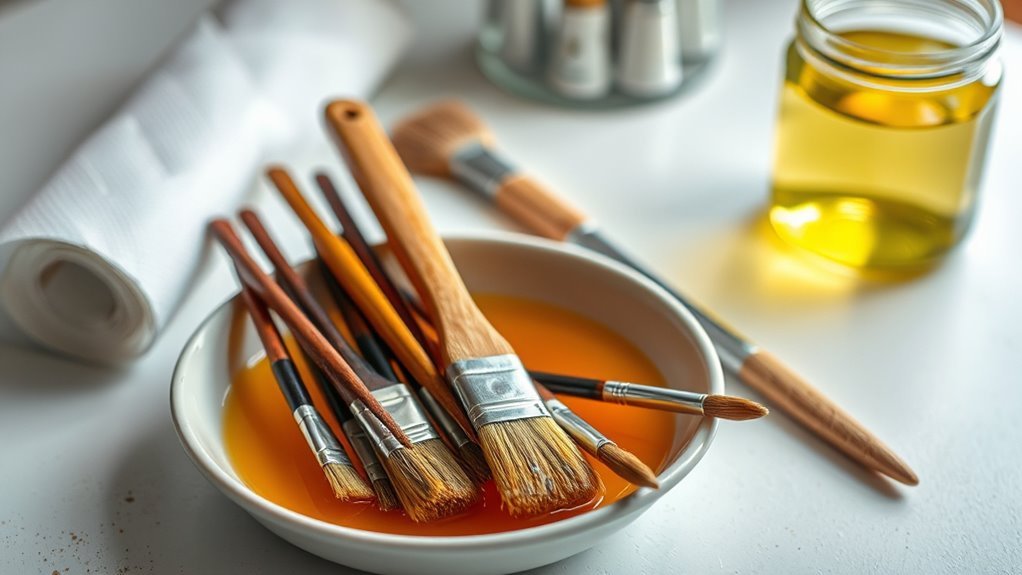
Before you plunge into cleaning your oil paint brushes, it’s essential to gather the necessary materials and set up a dedicated workspace. Start by laying down a protective covering for your surface to prevent any accidental stains. You’ll need a container for solvent—like mineral spirits—and a palette knife for scraping excess paint. Make sure you have clean rags or paper towels handy for wiping and drying. Prioritize brush maintenance by selecting a gentle solvent that won’t damage the bristles. As you prepare, think about paint preservation; keeping your brushes clean helps maintain their shape and extends their lifespan. A well-organized workspace not only streamlines the process but also enhances your creative freedom, allowing you to focus on your artistry.
Tools and Chemical Required
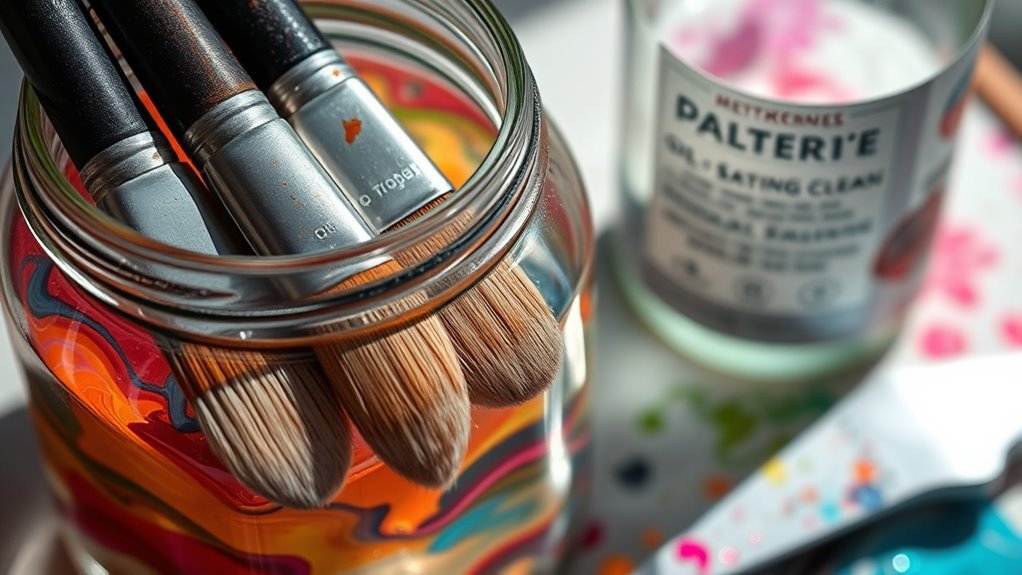
To effectively clean oil paint off brushes, you’ll need specific tools and chemicals that facilitate the process while ensuring the longevity of your brushes. Different brush types may require unique cleaning solutions, so gather the following essentials:
| Tool/Chemical | Purpose | Recommended Use |
|---|---|---|
| Mineral Spirits | Dissolves oil paint | For synthetic brushes |
| Brush Cleaner | Specific to brush types | For natural bristles |
| Soap & Water | Final rinse and care | After initial cleaning |
Having these tools at hand will streamline your cleaning process and help maintain the quality of your brushes. Always check the compatibility of cleaning solutions with your brush types to avoid damage during cleaning.
How to Clean:
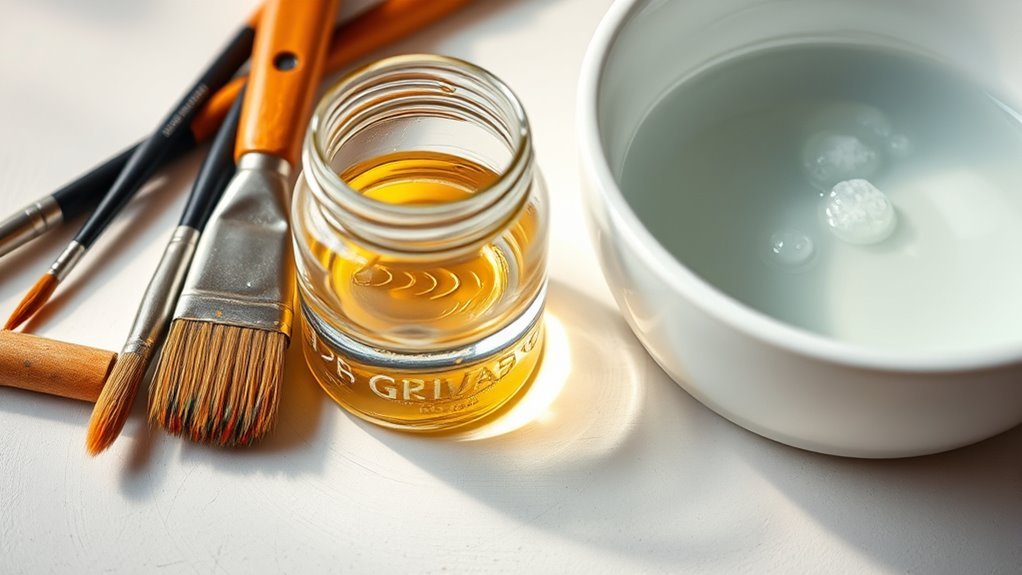
Step 1: Remove Excess Paint
- Begin by taking your brush and holding it firmly in one hand.
- Use a paper towel or rag to wipe the brush against its surface.
- Ensure you get as much paint off as possible, focusing on the bristles.
Step 2: Use Solvent
- Choose an appropriate solvent based on the type of paint used (e.g., water for water-based paints, mineral spirits for oil-based paints).
- Dip the brush into the solvent, making sure to submerge the bristles.
- Gently swirl the brush around in the solvent to help dissolve any remaining paint.
Step 3: Wash with Soap
- After the solvent cleaning, prepare a bowl or sink with warm water.
- Add a few drops of mild soap to the water to create a soapy solution.
- Dip the brush into the soapy water and gently work the bristles with your fingers to cleanse them thoroughly.
Step 4: Rinse and Reshape
- Rinse the brush under running water to remove any soap residue and remaining paint.
- As you rinse, reshape the bristles with your fingers to maintain their original form.
- Be sure to rinse until the water runs clear, indicating all paint and soap have been removed.
Step 5: Repeat as Necessary
- If the bristles still show signs of paint, repeat Steps 2 through 4 until they are clean.
- Inspect the brush after each cleaning to determine if further cleaning is necessary.
Step 6: Dry and Store
- Once clean, gently shake off any excess water from the brush.
- Lay the brush flat on a clean towel to dry or hang it with the bristles facing downward to prevent water from seeping into the ferrule.
- Store the brushes in a dry place to maintain their shape and quality for future use.
Safety Consideration
While cleaning oil paint off brushes is crucial for maintaining their quality, it’s important to prioritize safety throughout the process. Start by wearing appropriate safety gear, such as gloves and goggles, to protect your skin and eyes from harmful solvents. When using solvents like turpentine or mineral spirits, make sure you’re in an area with proper ventilation; this minimizes inhalation of fumes. Open windows or use a fan to circulate air effectively. Avoid using excessive amounts of solvent, and never pour it down the drain; instead, dispose of it according to local regulations. By taking these precautions, you’ll safeguard your health while enjoying the freedom to create without compromising on safety. Prioritize your well-being to enhance your artistic experience.
Frequently Asked Questions
Can I Use Regular Soap and Water for Cleaning Oil Paint Brushes?
You can’t rely solely on regular soap and water for cleaning oil paint brushes. While it might seem like a simple solution, the stubborn nature of oil paint requires more effective cleaning techniques. Instead, consider using a solvent like mineral spirits or linseed oil to break down the paint. After that, a gentle wash with soap can help guarantee your brushes stay in top shape, granting you the freedom to create without worry.
How Often Should I Clean My Oil Paint Brushes?
You should clean your oil paint brushes after each use to maintain ideal brush care. This cleaning frequency prevents paint buildup and keeps bristles in good condition. If you’re switching between colors, a quick rinse can suffice, but a thorough cleaning is essential at the end of your painting session. Remember, neglecting your brushes can lead to damage and decreased performance, so make it a habit to clean them regularly.
What Should I Do if My Brushes Are Already Stiff?
If your brushes are already stiff, don’t worry; you can restore them! Start by soaking the bristles in a solution of warm water and mild soap for about 30 minutes. Gently work the bristles with your fingers to loosen the paint. For tougher cases, try using brush restoration techniques like soaking them in a mixture of vinegar and water. Rinse thoroughly, reshape the bristles, and let them dry. You’ll have flexible brushes again!
Is It Necessary to Condition Brushes After Cleaning?
Yes, it’s necessary to condition your brushes after cleaning. Proper brush maintenance guarantees longevity and performance. After using effective cleaning techniques, apply a brush conditioner or a small amount of oil to the bristles. This helps restore flexibility and prevents stiffness, allowing the bristles to maintain their shape. Remember, conditioning isn’t just an extra step; it’s essential for keeping your brushes in prime condition for your next creative project.
Can I Reuse Cleaning Solvents for Multiple Sessions?
Yes, you can reuse cleaning solvents for multiple sessions, but be mindful of their solvent lifespan. As you clean brushes, the efficiency diminishes over time, leading to less effective removal of paint residues. Striking a balance between reusing solvents and maintaining cleaning efficiency guarantees you get the most out of your materials. Regularly check the clarity and consistency of your solvent; if it looks dirty or thick, it’s time to replace it.
